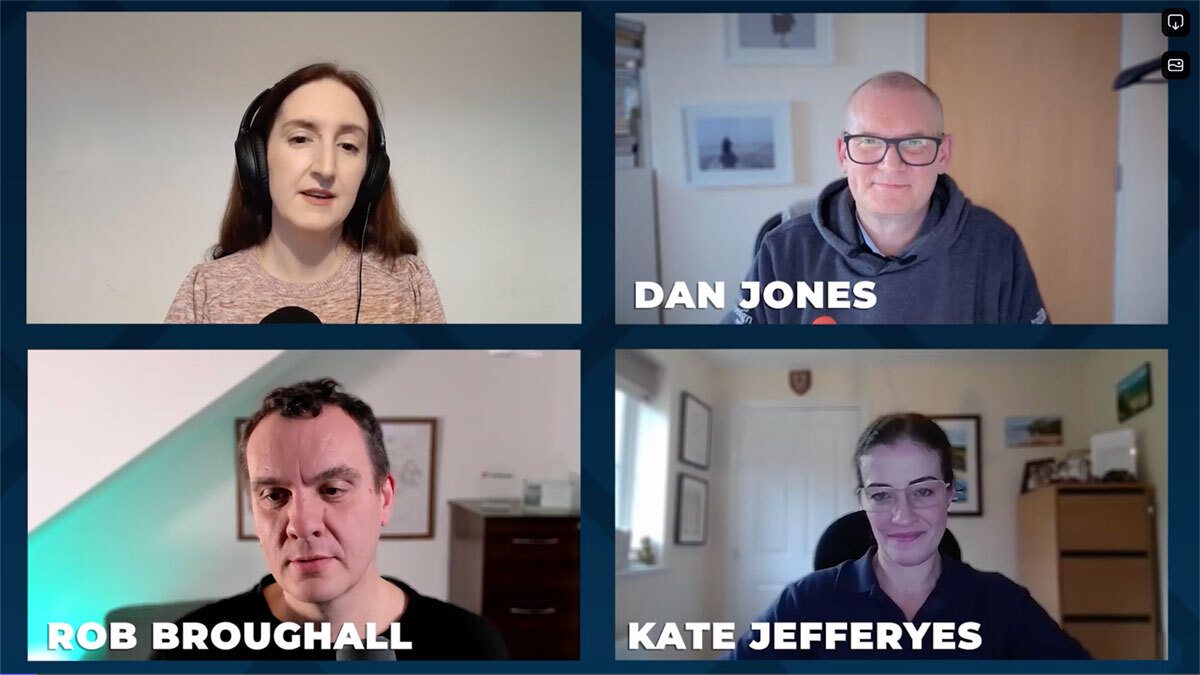The women returning to tech – and why they left
As the attrition of women in tech continues to bite, workers who have left and rejoined the sector explain what changed their minds and the lessons leaders can take from this


The tech sector is slowly moving to improve its gender diversity, with more active efforts to hire women and recognition of the barriers holding back women in tech. But even as women are entering the sector through one door, it loses out on more women through attrition through another.
Challenges around recruiting and retaining women have been discussed for many years. Discriminatory hurdles for women in tech include sexism, a lack of flexible working options to support care responsibilities, an absence of upward mobility, and more recently return to office (RTO) mandates.
As the tech sector continues to face skill shortages, the loss of women in tech will be felt even more dearly. It’s predicted that three million new jobs requiring digital skills will be created in the UK by 2025, per techUK’s Fast Forward for Digital Jobs report, underlining the industry’s need to take immediate action to close the growing digital skills gap.
A clear way to achieve this is to stem the significant flow of women leaving the tech world, with one in three women planning to leave their tech job according to recent research by Tech Talent Charter (TTC).
“There are many contributing factors to why women in tech are leaving the industry but a key one is that employers are denying women the flexibility to manage caring and professional commitments at the same time,” says Karen Blake, co-chief executive officer at TTC.
“The unconscious close-mindedness and hostility towards workplace practices that alleviate career blockers for women is a major reason women are pushed out of the workforce.
“Sadly, we’re also now seeing [return to office] (RTO) mandates undoing flexible working progress from the last few years, further entrenching exclusionary workplace setups that are tantamount to discrimination against women and many other groups.”
Sign up today and you will receive a free copy of our Future Focus 2025 report - the leading guidance on AI, cybersecurity and other IT challenges as per 700+ senior executives
Tech’s impact on female leadership
These challenges impact the number of women in IT leadership roles, with the TTC reporting the proportion of women or non-binary workers in senior tech roles was 21% in 2023, compared to 29% of tech role holders overall.
The report emphasizes that this gap has grown by a percentage point since 2022, showing that even as sector diversity and representation of gender minorities in tech increases, senior positions remain out of reach for most.
“If women can’t progress in their careers, they’ll never get the opportunity to find routes to leadership – 80% of women who left a tech job recently said that dissatisfaction with career progression was a factor that contributed to them leaving, so we know there is no shortage of aspiration or ambition,” Blake says.
To harness this aspiration, a growing number of businesses are now focusing on progression programs to help women move into leadership roles.
Female returners could make a big difference to the skills gulf the IT sector faces, so it’s imperative that the industry develops and signposts more routes back to the sector, such as returnships and coding bootcamps or data science bootcamps, , as well as provide the necessary support they need on their return.
Here five women share the reasons they left and later returned to the tech sector, as well as their experiences of coming back.
Deepana Naidu

As a software engineer working in Singapore, Deepana Naidu often felt like a cog in a machine and lacked a meaningful connection to her work. She therefore decided to take a career break to reassess what she wanted.
In the end, it was a three-month Tech Returners bootcamp which showed her what her previous role lacked: a supportive role in which she could thrive.
“The working environment was enjoyable, ambitious, and productive and the exchange of ideas and passion drew me to volunteer as a software engineer with a Singaporean startup." Naidu tells ITPro that with an actively supportive workplace, she could go further than she had previously.
“I realized this was what was missing in my career before. Looking back, I wonder if I’d had this environment, whether I would’ve done greater things or seized more opportunities. This motivated me to not only return to tech but also to ensure that the first job I got was in an environment just like this.”
RELATED WHITEPAPER

It had been four years since Naidu had last worked in the tech industry when she began working as an engineering consultant at Daemon, in the UK, through a Tech Returners program in Java. “The tech landscape is vastly different here, but in moments of self-doubt I’d draw strength from the lessons learned during my break and pick myself up.
“The most important skill I learned was getting comfortable stepping out of my comfort zone. That was something I’d constantly had to do during my time away and it’s not only helped push me further technically, but also revealed my passion to be an integral part of a tech community that prioritizes relationships and connections.”
Rookie Davies

When her company offered voluntary redundancy, project manager Rookie Davies took the opportunity to pursue a different career path.
“I’d always loved the idea of events management which has huge synergies with project management, so I began a course in stadium and event management as well as a cooking class, as that’s something I’ve always enjoyed,” she says.
Unfortunately, the course wasn’t all she’d hoped it would be and Davies left after a year, with no idea what to do next.
“I felt like I’d been out of IT too long to return,” she says. “While I was starting to figure out my next steps, I happened across an advert for someone to cater a party and an idea started to form. I came up with Wombie’s Kitchen, a specialist catering company providing food for people with allergies and intolerances.”
Davies again considered returning to the tech sector when one of her previous employers got in touch about a new opportunity. Though her business was growing well, it was taking up a significant amount of time and so four years after she left the IT industry she decided to rejoin.
“It was just like getting back on a bike after years of not riding one, a bit wobbly for a short time and then you’re off. I had some wonderful peers and great teams to work with to get me up to speed on the products where my knowledge was lacking. There were of course new systems to use for resourcing and finance which I had to learn, but it didn’t take long to get back into the swing of things.”
Davies believes that she would have likely never left the IT sector had she seen a clear pathway for career progression and had a mentor in the business. “I’ve seen many of my peers going on to great things and I do wonder what might’ve happened had I stayed.”
Andrea Palmer

Although she’d wanted to do something different for quite some time, Andrea Palmer stayed in her role at BP for the security of her final salary pension.
“I felt like I would be doing myself a disservice if I left of my own accord, but when voluntary redundancy came up, I took the opportunity to reflect on what I wanted to do,” she says.
This essentially took the form of early retirement, which enabled Palmer to work on some passion projects around improving diversity in STEM, including co-authoring a book with several other female members of the specialist group BCSWomen, which she currently chairs.
However, when the book was completed, Palmer knew she wasn’t quite ready to retire yet.
“With all the work I’d been doing around diversity, I felt I still had so much more to give and that I needed to be in the tech industry in order to continue making a difference,” she says.
Palmer had decided that if she did return, she wanted to experience a different completely different industry. With this in mind, and so now works as a principal consultant at Infosys.
“I loved my time at BP, but I’d become pigeonholed and wanted to do something new. I’m now working more on the people side and helping to embed tech in the business and am also helping lead Infosys’ diversity equity and inclusion work in Europe.”
Lisa Gilby

Lisa Gilby began her IT career in financial services and in 2005 she moved to Japan with her now husband, where she planned to find a similar role. Due to a combination of challenges including the working environment in Tokyo, the language barrier, and global financial crisis Gilby struggled to find a suitable role and pursued opportunities outside tech.
During her 18 years away from IT, she completed an MBA, spent two years learning Japanese, worked as a costume designer and, on returning to the UK, project-managed the development of a farm, before beginning to struggle with several perimenopausal health issues.
The pandemic led to some introspection and beginning HRT helped Gilby’s return to work seem much more achievable. Gilby felt this was the boost she needed to return to the sector and become a scrum master for Aegon UK.
This was made possible via a Return to Tech program with a six-month contract and the opportunity to apply for a permanent role.
“Through this, I was supported by Career Returners with several tailored coaching sessions,” Gilby tells ITPro. “The scrum master role was new to me but didn’t involve detailed technical knowledge – it’s a soft skill role focusing on coaching and development.
“I have a hybrid role and the nitty gritty of laptop set up and working out authentication procedures was a bit challenging after such a long time out of the working world. Getting to grips with Teams calls and etiquette took a little bit of time as well,” she says.
“I won’t deny that the first day was very daunting, but I was quite surprised how quickly being a returner really wasn’t part of my corporate identity – I just got on with the job.”
Ann Barr

Both Ann Barr and her husband were in tech roles involving long days and lots of travel, so when she became pregnant with her first child they jointly took the decision that she’d step back from her career.
As her family grew, Barr spent her time completing a psychology degree, later returning to work part-time in the volunteering sector before becoming the owner of a Tumble Tots franchise.
She first dipped her toes back into the tech water in 2017, when an old friend asked her to organize a Django Girls programming workshop at a three-day technical conference.
“I declined because I didn’t have the tech credentials, but he said he’d asked me because of my organizational skills,” Barr tells ITPro.
“I ran the workshop but ended up staying for the whole event as the community was very welcoming and accessible. I didn’t feel totally out of my depth, and that’s when the seed was sown,” she says.
With older children and a growing need for more of a challenge, Barr went on a Tech Returners bootcamp 20 years after leaving the sector. The experience reminded her how much she enjoyed the technical world, confirming it was something she wanted to return to. Today she works full-time as a software engineer at Spektrix.
“I think we need to see an increase in these kinds of returner programs if the industry wants to bring women back,” she says. “Things have moved forward in terms of shared parental leave, and the pandemic was a bit of a leveler, but there’s still much more to be done to help women excel in this industry.”
Keri Allan is a freelancer with 20 years of experience writing about technology and has written for publications including the Guardian, the Sunday Times, CIO, E&T and Arabian Computer News. She specialises in areas including the cloud, IoT, AI, machine learning and digital transformation.


